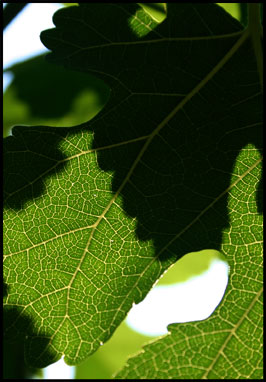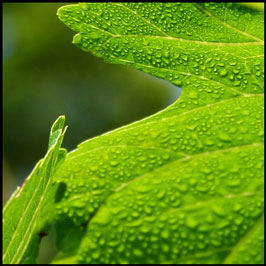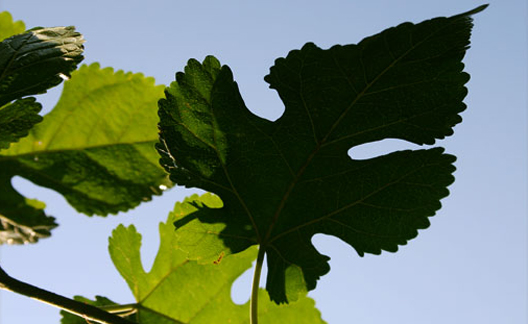Mulberry
by Joshua Heston
Of the three species of mulberry in the Ozarks, only the red mulberry (Morus rubra) is native to North America.
It is believed that both black (Morus nigra) and white (Morus alba) mulberries originated east of the Mediterranean and were brought into Europe during the Crusades (Wernett, 301).
Consequently, all types of this tree (which are closely related to the Osage-orange) have been growing in this land of ours for at least 300 years.
Considerable hybridization occurs between species so exact identification can be hard.
However, there are some basic traits for which to look.
The first is the most obvious: fruit color.
Morus rubra ripens to a quite red. The “berries” tend to be comparatively long aggregate fruit, with tightly packed individual drupes. The taste ranges toward the tart side.
The leaves of the red mulberry are often quite large. Its bark has a slightly orange tint, similar to its cousin, the Osage-orange.
Black mulberries’ fruit is rounder, less compact, and less tart. During drought years, black mulberries can be rather tasteless. The leaves of
Morus nigra are much smaller than those of Morus rubra.
White mulberries’ fruit share similar size, shape and composition with Morus nigra. They are, however, the sweetest of the three species with an intoxicating flavor.
The leaves of the Morus alba tend to be quite small as well.
The mulberry is usually considered little more than a nuisance these days.
The fruit of the tree can be messy alone. It is even more so after traveling through the digestive tract of a robin.
And our society has little respect for plants or animals that force us to clean our windshields.
Nevertheless, it is important to remember the significance of this tree family.
Mulberries, which usually begin ripening in late June, were so cherished by our ancestors that species were brought with them across the Atlantic in the 16th and 17th centuries.
Mulberries were an important staple to Native Americans and early European settlers.
Mulberries are part of our rich, collective heritage.
It is best we not forget that.
May 13, 2009
Plate 1.

Plate 2.

Plate 3.
All photo credits: J. Heston. SOTO © Archive 08/22/06
...mulberries
For everybody else these days (it seems), mulberries are just a nuisance. Not for me.
Particularly as a little kid, mulberries were about the most exciting thing to happen during the summertime (or at least they ranked awfully high on the list, along with the ripening of the wild plums and the 1983 release of Return of the Jedi).
Mulberries — at least the sweet ones and you have to know the right trees for that! — were far better than any berry you could get in a store.
And to me, they'll always symbolize the entrance of summer, the fast-approaching Independence Day celebrations, the expectations of a whole season.
In June, summer still seems like it can last forever. The lightning bugs are at their height. The sound of the frogs still new. It's a good time. I'm glad to say I still enjoy this time of year immensely and I hope you all do as well.
— from June 10, 2010 State of the Ozarks Weekly Issue 136
Red Mulberry (Morus rubra)
Size: 20-30 feet tall; leaves 3 to 5-inch long. What to look for: leaves oval, mitten-shaped, or 3-lobed, coarsely toothed, hairy below; fruits dark red to purple. Habitat: bottomlands and gentle slopes in rich, moist soil.
— page 301, Wernett, Susan J., et al. North American Wildlife. The Reader's Digest Association, Inc., 1986.
From The Herbal Compendium:
Mulberry. Morus rubra. Red Mulberry.
Bark: Vermifuge. Cathartic.
The infusion of the pulveruized bark is useful as a cathartic and to dispel worms. “A fine flowering shurb, in upland woods, U.S. and Brit. Amer. common. Fruit bright red, sweet. Fruit ripe in Aug. Flowers in June and July.”
— page 164, Shaker Medicinal Herbs: A Compendium of History, Lore and Uses by Amy Bess Miller
A word of safety: folk remedies on StateoftheOzarks are published for informational purposes only. These remedies are never intended to cure, treat or mitigate any disease or disease condition. For questions about disease or disease conditions, consult a qualified healthcare professional.
The Mulberry Bush Song
- Here we go ’round the mulberry bush
- The mulberry bush,
- The mulberry bush,
- Here we go ’round the mulberry bush
- So early in the morning!




